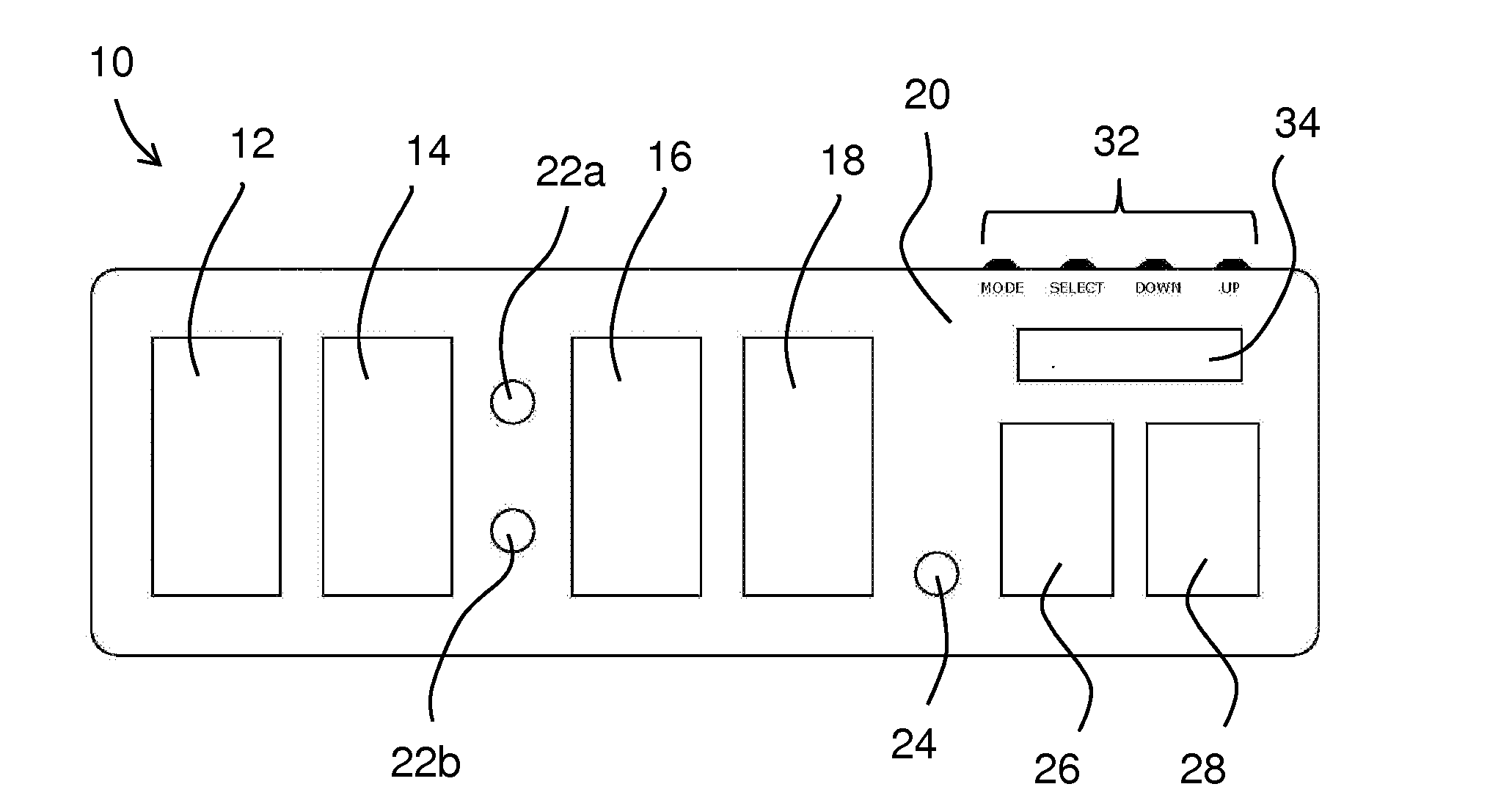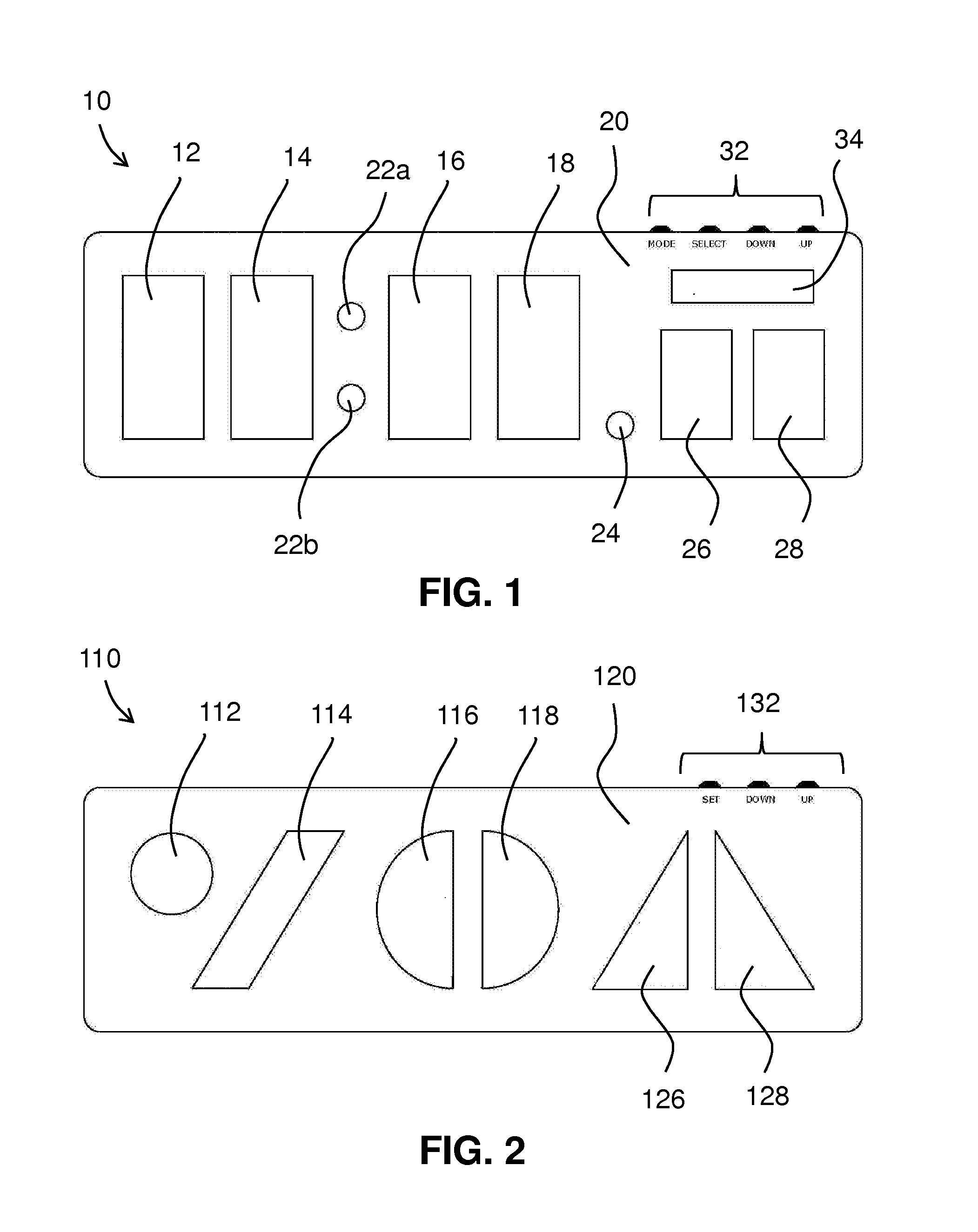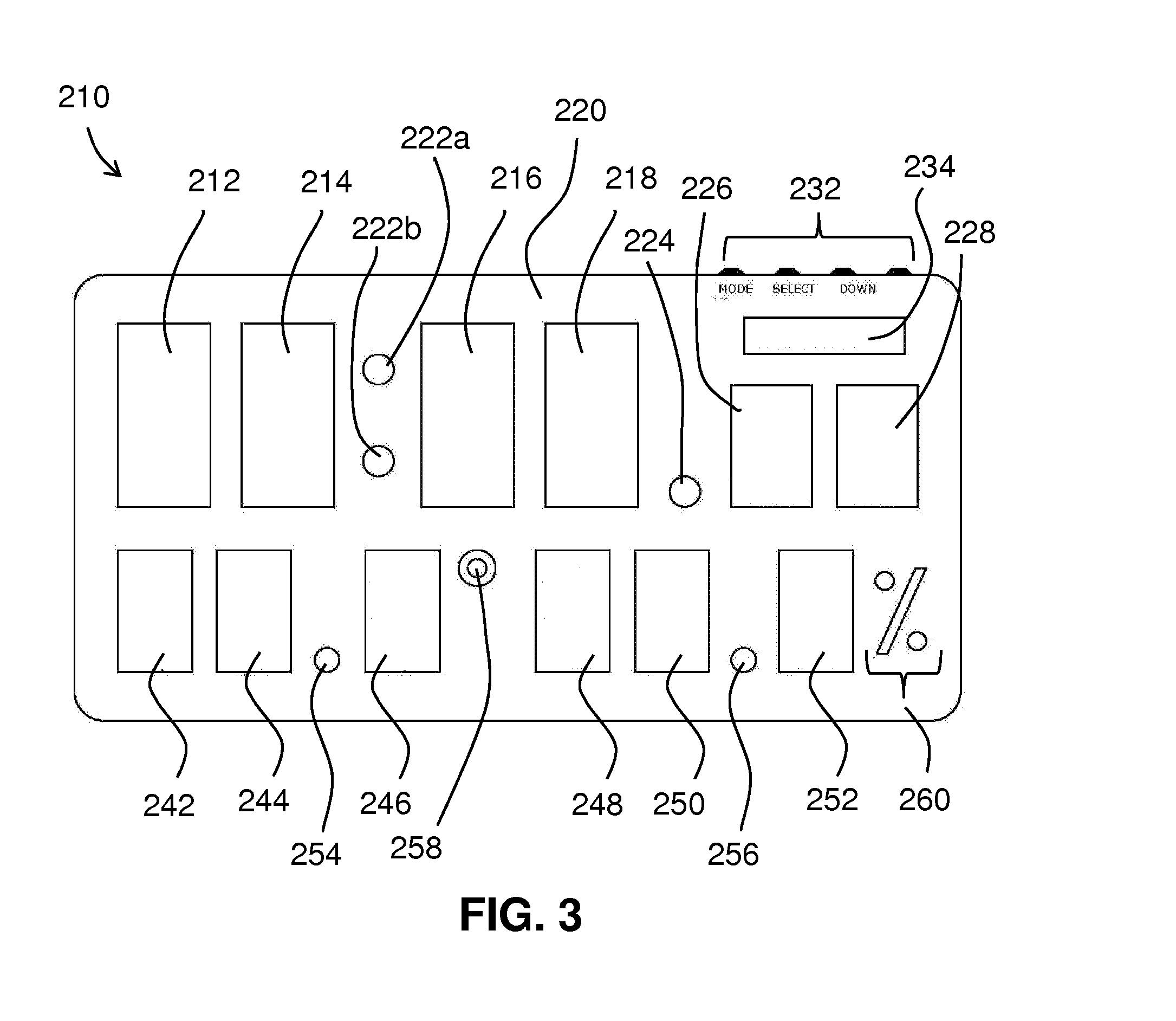Digital Color Clock
a color clock and digital technology, applied in the field of digital color clocks, can solve the problem that the clock is not easily identifiable to an uninitiated observer, and achieve the effect of easy differentiation and relatively simple color codes
- Summary
- Abstract
- Description
- Claims
- Application Information
AI Technical Summary
Benefits of technology
Problems solved by technology
Method used
Image
Examples
Embodiment Construction
)
[0026]FIGS. 1, 2 and 3 illustrate various examples of a digital color clock.
[0027]FIG. 1 is a basic build of a digital color clock 10. Its main panel 20 includes six Color Digits for the tens digits of the hour 12, the ones digits of the hour 14, tens digits of the minute 16, the ones digits of the hour minute 18, tens digits of the second 26, and the ones of the second 28. The display uses a colon 22a, 22b and a period 24 for the unit separators.
[0028]The Color Digit for the tens digits of the hour 12 shows at least two different colors corresponding to 0 and 1. Likewise, the Color Digits for the tens digits of minute 16 and the tens digits of the second 26 show at least six different colors corresponding to 0-5. The rest of the Color Digits show all ten colors corresponding to 0-9.
[0029]The basic build includes an optional LCD panel 34 and a collection of buttons 32, which can be used to set the time or an alarm, among other functions.
[0030]FIG. 2 is digital color clock utilizing...
PUM
 Login to View More
Login to View More Abstract
Description
Claims
Application Information
 Login to View More
Login to View More - R&D
- Intellectual Property
- Life Sciences
- Materials
- Tech Scout
- Unparalleled Data Quality
- Higher Quality Content
- 60% Fewer Hallucinations
Browse by: Latest US Patents, China's latest patents, Technical Efficacy Thesaurus, Application Domain, Technology Topic, Popular Technical Reports.
© 2025 PatSnap. All rights reserved.Legal|Privacy policy|Modern Slavery Act Transparency Statement|Sitemap|About US| Contact US: help@patsnap.com



